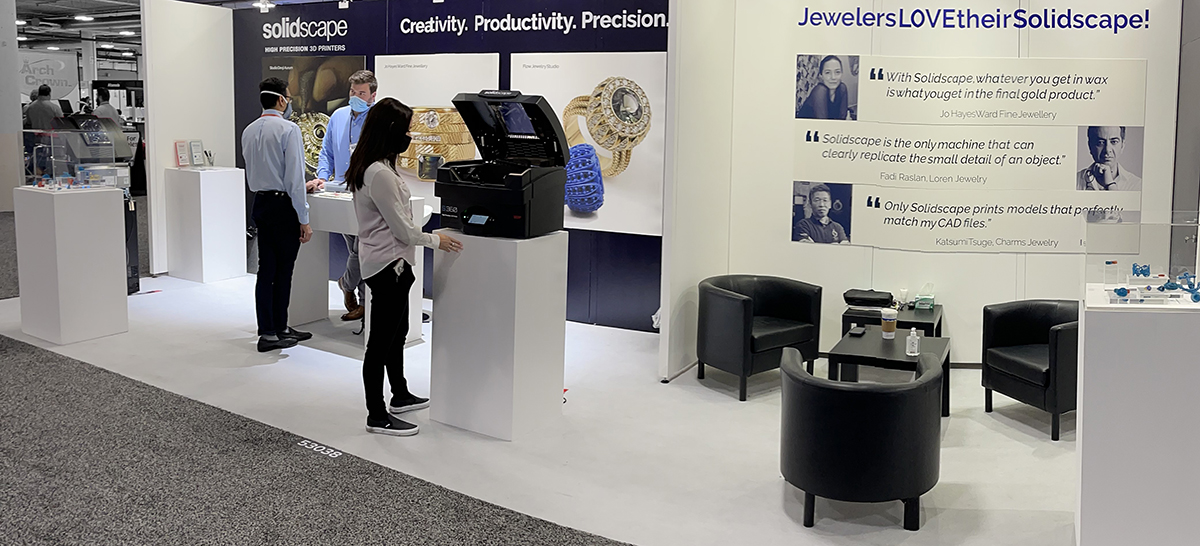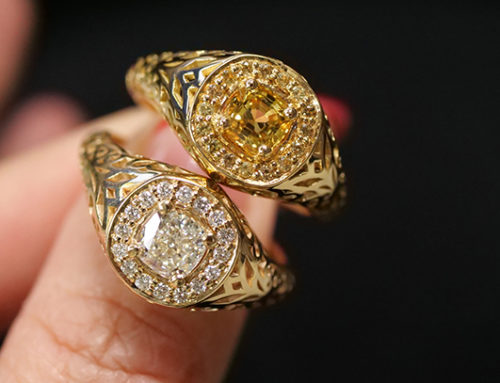After a 2-year gap, luxurious jewelry and the glamour of Las Vegas was once again the perfect pairing for the gathering of jewelry professionals at the JCK and Luxury shows. Although diminished by the necessary health precautions, the experience of meeting in person again was as irreplaceable as ever.
The late August timeframe was another reason for a low attendance. Major retailers and chain stores had already finalized their orders for the approaching holiday selling season. Missing was the contagious excitement among the crowd of jewelers and retailers enthusiastically greeting each other in the hallways and aisles. For members of the jewelry community, the social aspect of attending JCK has always been an important and cherished byproduct of doing business.
As an exhibitor in the Essentials and Technology Hall, we missed the usual number of customers who drop by the booth to say hi and catch up. We look forward every year to hearing how their businesses and families are doing and seeing their latest creation they are showing off. They in turn always remind us of having the very best customer-focused technicians in the industry. Digital communication will never be so enjoyable.
How technology is changing jewelry
A higher degree of comfort with technology among jewelry business owners became evident at the show this year. How different it was 10 years ago when I worked my first jewelry trade show. The Solidscape machines that printed 3D wax models seemed strange to some and they thought they could never understand it. The ones who chose to embrace the opportunity to increase their business made great strides. They affectionately referred to Solidscape 3D printing as “growing” their wax models.
With so much change, the industry had a lot to digest. The first stumbling block for most was the seemingly impossible hurdle of learning to design in CAD. But developers were listening and the advances in software for jewelry helped to move things along. Then a new generation of digital natives started to emerge bringing with them an excitement to discover the possibilities. As a result, they are helping to transition the jewelry industry into a new era of creative exploration and new ways of marketing and selling.
Working for a major design house had been the traditional method for entering into a career in jewelry design. But things have changed and adopting someone else’s aesthetic standard is no longer a requirement for gaining acceptance from buyers. CAD and desktop 3D printers have given individuals the tools to create their own line or custom jewelry. Rather than mimic the elaborate opulence and precious gemstones long valued by the jewelry establishment, emerging designers are infusing their distinctly unique jewelry with symbolism and personal meaning.
Emotion equals added value
Increasingly more customers are interested in buying jewelry that is representative of who they are rather than simple self-beautification. For the jewelry to make them feel good, it must be in line with their personal values. Designers feel the same way and relevant jewelry lines can easily be found at retail today. Acceptance, inclusivity, an appreciation of different cultures and a concern for the environment are some of the ideas currently influencing jewelry designers. Wholesale buyers are looking for this emotional currency and the story behind the jewelry has become an important added value.
One of the most powerful tools a retailer uses when selling fine jewelry is educating the customer. However, it is not uncommon now for a customer to walk in the door primed with all the information they found on the internet. They are ready to experience the jewelry in person and walk back out the door to price shop online. To avoid this, the designer’s message behind their jewelry could be the story that saves the day. When it connects with the customer on a personal level, it most likely will be the emotional pull that lands the sale.
Social media has helped raise awareness of all kinds of issues potentially influencing jewelry purchases. For example, the impact mining sometimes has on local environments. It is also possible for mining to be done with no long-term negative effects and can be an opportunity to bring education and good jobs to a community in need. There are mining companies committed to supporting the local community rather than sourcing the gem cutting and other labor overseas. This is an opportunity for jewelry producers willing to do the research and take on the good work of finding the artisanal and small-scale miners that ensures materials are ethically sourced. Marketing and communicating the advantages of socially responsible jewelry will have a positive impact on an industry that is all about relationships.
Sustainability can mean different things throughout the supply chain. We see designers embracing a variety of creative solutions and they tie to the identity of their brand. There is the repurposing of out-of-date jewelry, the recycling of gold and reusing gemstones to name a few. One emerging business model is jewelry rental memberships for jewelry lovers craving variety on a budget.
The shows in Las Vegas were evidence of a generational evolution happening in the jewelry industry. We can all look forward to becoming a better world together.


